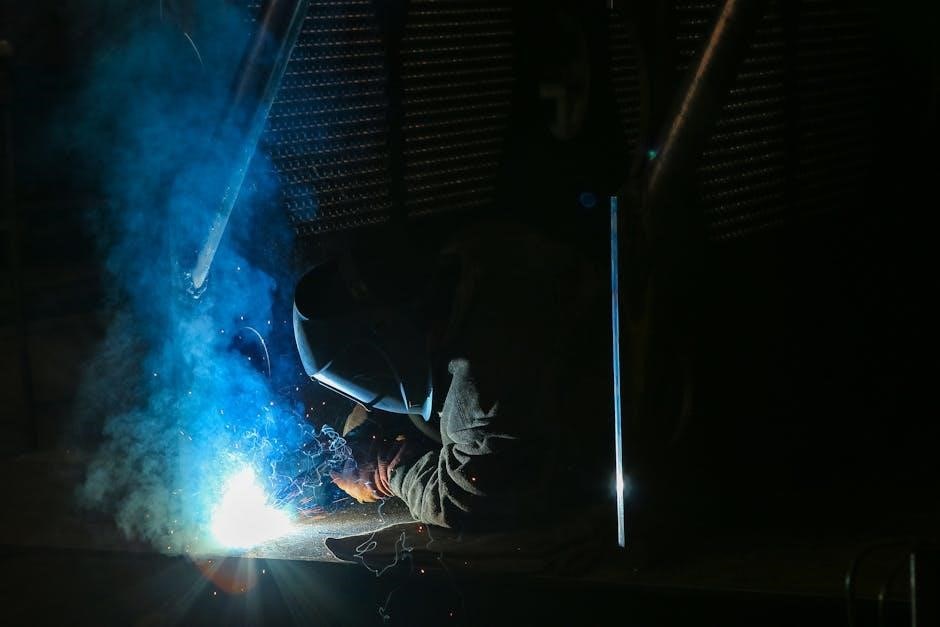risk assessment on manual handling

risk assessment on manual handling
Manual handling refers to any task requiring the use of force to lift, carry, or move loads. Risk assessments are crucial to identify hazards, prevent injuries, and ensure compliance with health and safety regulations in workplaces.
Importance of Manual Handling Risk Assessments
Manual handling risk assessments are essential to prevent work-related injuries, reduce costs, and ensure legal compliance. They help identify potential hazards, minimize risks, and create a safer work environment, protecting both employees and employers from associated liabilities and consequences.
2.1 What is Manual Handling?
Manual handling involves any task that requires the use of physical force to lift, carry, push, pull, or move loads. This includes activities such as lifting boxes, carrying equipment, or assisting patients in healthcare settings. It is a common activity in various industries, from manufacturing to healthcare, and can pose significant risks if not performed correctly. The primary goal of manual handling is to move or support a load, but improper techniques or excessive force can lead to injuries, particularly to the musculoskeletal system. Employers and employees must understand the nature of these tasks to implement safe practices and reduce the likelihood of harm. Proper training and risk assessments are essential to ensure that manual handling is done safely and efficiently, minimizing the potential for accidents and maintaining a healthy workforce.
2.2 Why Conduct Risk Assessments?
Risk assessments are essential for identifying and controlling hazards associated with manual handling tasks. These evaluations help employers and employees understand potential risks, such as musculoskeletal injuries, which are common in industries involving heavy lifting or repetitive movements. By conducting thorough risk assessments, workplaces can implement preventive measures, reducing the likelihood of accidents and ensuring compliance with health and safety regulations. Tools like the MAC (Manual Handling Assessment Chart) and RAPP (Risk Assessment of Pushing and Pulling) provide structured methods to evaluate tasks and prioritize safety. Regular assessments also foster a culture of safety, encouraging employees to report unsafe practices and participate in improving workplace conditions. Ultimately, risk assessments protect both the well-being of workers and the operational efficiency of organizations by minimizing injuries, absenteeism, and related costs. They are a critical step in creating a safe and sustainable working environment.

Conducting the Risk Assessment
Conducting a manual handling risk assessment involves identifying hazards, evaluating risks, and implementing controls. It requires analyzing tasks, loads, and environments to minimize injury risks. The process ensures compliance with safety laws and promotes a proactive approach to workplace safety. Proper documentation and regular updates are essential.
3.1 Identifying Hazards
Identifying hazards is the first step in conducting a manual handling risk assessment. It involves analyzing tasks, loads, and environments to pinpoint potential risks that could lead to injury. Hazards may include heavy or awkwardly shaped loads, repetitive movements, or poorly designed workspaces. Understanding the nature of the task, such as lifting, carrying, or pushing, is critical. Additionally, the load’s weight, size, and stability should be evaluated. Environmental factors like uneven surfaces, limited space, or extreme temperatures can also contribute to hazards. Individual factors, such as the handler’s physical capabilities or prior injuries, must be considered to ensure a personalized assessment. Documenting these hazards provides a clear foundation for the next steps in the risk assessment process. Regular reviews and updates to hazard identification are essential to adapt to changing work conditions and ensure ongoing safety. By systematically identifying hazards, employers can take proactive measures to mitigate risks and protect workers from manual handling injuries.

Tools and Compliance
The MAC (Manual Handling Assessment Charts) and RAPP (Risk Assessment of Pushing and Pulling) tools are essential for evaluating manual handling risks. These tools help employers comply with health and safety regulations, ensuring tasks are assessed accurately to minimize injury risks.
4.1 The MAC Tool

The MAC (Manual Handling Assessment Charts) tool is a widely recognized method for evaluating manual handling risks. Developed by the Health and Safety Executive (HSE), it provides a systematic approach to assess tasks involving lifting, carrying, and lowering loads. The tool considers factors such as the weight of the load, the distance it is carried, and the posture required by the individual. By breaking down each task into key components, the MAC tool helps identify potential risks and provides guidance on reducing them. This ensures that employers can implement appropriate control measures to protect workers from musculoskeletal disorders and other injuries. Regular use of the MAC tool not only enhances workplace safety but also promotes compliance with health and safety regulations. Its user-friendly design makes it accessible for various industries, allowing organizations to tailor assessments to their specific needs. Ultimately, the MAC tool is an invaluable resource for conducting thorough and effective manual handling risk assessments.

Training and Implementation
Proper training is essential for ensuring that manual handling risk assessments are effectively implemented in the workplace. Employers must provide comprehensive training programs that equip employees with the knowledge and skills to handle tasks safely. This includes understanding how to conduct risk assessments, using tools like the MAC tool, and applying safe handling techniques. Training should be practical, incorporating demonstrations and hands-on exercises to reinforce learning. Additionally, regular refresher courses are necessary to keep employees updated on best practices and regulatory changes. Supervisors and managers should also receive training to ensure they can monitor and support safe manual handling practices effectively. By fostering a culture of safety and continuous improvement, organizations can reduce the likelihood of injuries and create a healthier work environment. Effective implementation of training programs not only protects employees but also contributes to overall business efficiency and compliance with health and safety standards.